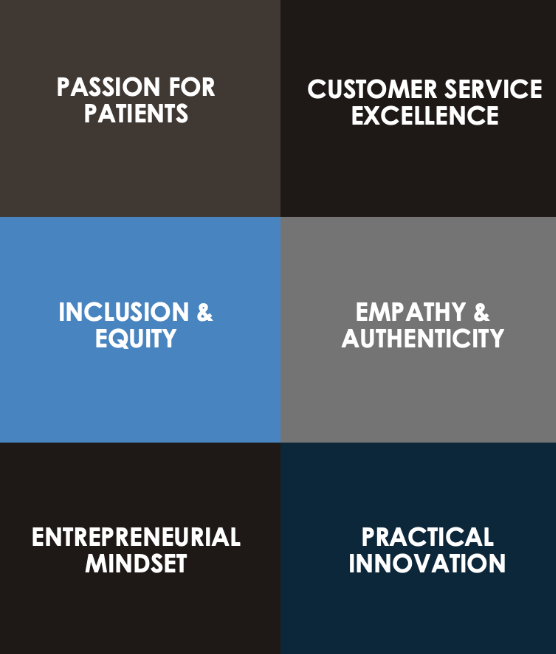What biopharma has in common with legal and banking is a penchant for creating PDFs as reference guides for everything. The opportunity is now to pivot to a much more personal approach that moves the needle in patient communication.
It just didn’t add up. The shipping record was clear: we had sent out the requested audio guide to the legally blind person on the other end, and someone had signed for receipt of the item. Then the caller reported that there appears to be a pattern of checks and other important items never arriving. More cross-referencing, record checking, and probing soon brought to light a disappointing truth: Someone was stealing, on a regular basis, from this vulnerable individual. This episode, to me, is a classic example of problems you’ll only ever solve if two real people actually take the time to talk through what is going on.
Even the savviest among us are finding it increasingly hard to navigate and judge the trustworthiness of web content, automated communication and bot-powered phone calls. Now imagine facing that same challenge being a patient searching for answers. It’s scary! Unfortunately, interpersonal communication is not par for the course of what the biopharma industry offers to patients. The above example is a rare exception. Most of the time, a patient will receive some ads, a website, and a PDF, often termed “doctor discussion guide.” You decide if that’s good enough.
Doctor discussion guides: A great idea for a fraction of patients
Most pharma marketers will pat themselves on the back if they can get a patient to talk to their doctor. Whether those conversations actually happen is hard to quantify, and whether they’re happening due to marketing efforts even harder. And then we haven’t even addressed the question if such a patient-HCP encounter is productive. In any case, it’s certainly a good idea to elevate patient knowledge and ownership of their own health. The most commonly deployed tool to do this is to produce a doctor discussion guide, a PDF that people can find on the brand’s website. Read it, print it out, bring it to your appointment.
Google “doctor discussion guide,” and you’ll find tools that help patients start doctor conversations, track symptoms, and make informed decisions. There’s nothing inherently wrong with that. It’s not that it doesn’t “work.” There’s widespread acceptance within the HCP community of such resources, and no major obstacles would preclude patients from utilizing the guides—except that they just don’t. Engagement metrics for these PDFs are low. People hardly ever download them, only a fraction of the downloaders print the document out, and only a fraction of those ever bring it to the appointment. And viewing a doctor discussion guide on mobile is even harder if the document isn’t optimized for that particular use case.
Revisiting the measuring stick
So there’s clearly an over-reliance on doctor discussion guides in PDF format. Not only that, doctor discussion guides even serve as a benchmark, a key performance indicator of direct-to-patient marketing efforts. Why? If we know an approach isn’t working, why do we do the same thing over and over and somehow expect different results? And why on earth would we choose the poor performance of a tactic to serve as a measuring stick to gauge brand performance?
Part of the explanation is of course that we have to measure something. Given that we can’t participate in doctor-patient interactions to assess the quality of the conversation, we just measure the next best thing; download metrics from brand.com. The good news: This is not the next best thing. There’s actually a next better thing. It’s called personal communication.
A doctor discussion guide who takes you by the hand
To influence behavior, we must drive recall, understanding, and motivation. That’s why marketers often use storytelling. Stories contain an emotive element that allows people to remember and understand content better. Deployed thoughtfully, this can strongly motivate people to take action. Similarly, personal interaction also adds emotional connection on top of the information conveyed. What if your doctor discussion guide were an actual human guide, rather than a PDF?
There’s two different ways to fix a broken situation: Iron out the kinks in the current approach or try a different approach altogether. It’s a bit like when back in the day, inventors just couldn’t land a major success with steam-powered cars. Only once they pivoted to a more effective type of engine, the motorcar was primed to change the face of the world. That’s how we like to think of doctor discussion guides. Why keep producing PDFs if we can give patients actual guides?
Creating brand value by providing patient value
Patient engagement on a personal level is the gold standard. Making a PDF is certainly easier but engaging personally is possible and provides a lot more brand value. Patient engagement agencies have built infrastructures and procedures to engage on a human level. First, health educators are trained professionals who can provide white glove service on behalf of the brand, like in the instance above, when a patient was expecting shipment. Second, patients and caregivers themselves can be sources of personal brand interactions. Strategically, it doesn’t really matter if those interactions happen over the phone, SMS, email, customized app, video chat, or in-person. An executional decision like that should be left to patient preferences, which may vary from one disease category to the next and which may of course change over time, given pandemics and other external circumstances.
Involving real patients and caregivers—whether they serve as mentors, Ambassador storytellers, or members of an advisory board—is crucial in this mix, as they are the only way to ensure that engagement efforts resonate, provide patient value, and improve patient-HCP conversations. With personal communication, you’ll have a much clearer idea of what’s happening at an in-office or telehealth doctor visit. You’ll know that the patients you engaged with are prepared. You’ll know that the patient’s voice is guiding the conversation, that the visit will solicit answers to the right questions, and that it will deliver patient-centric results.















